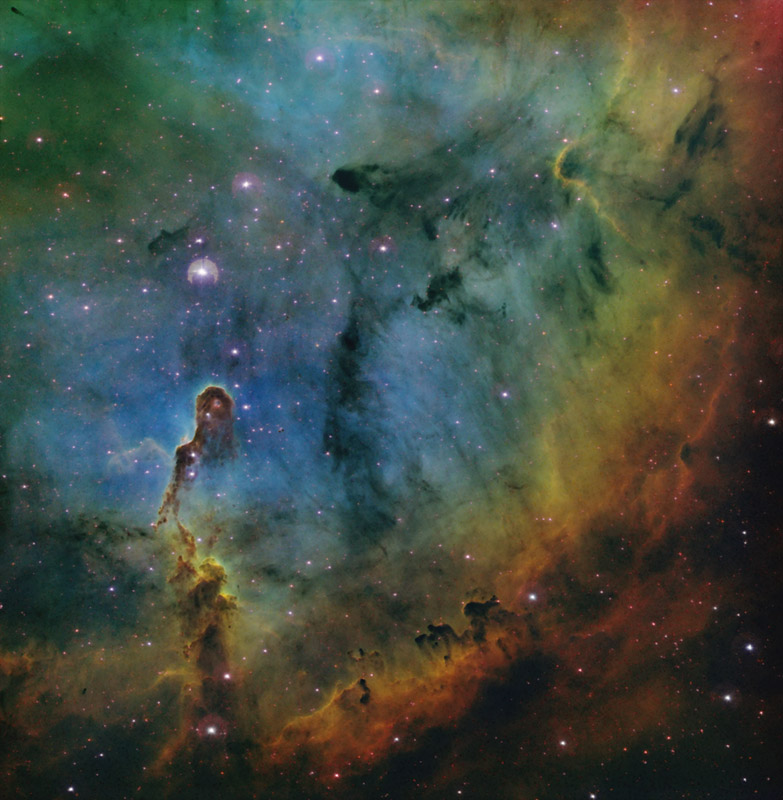Last night I managed to confuse most of my
twitterfriends by telling them I was looking at stars and seeing pretty things in the sky. I wasn't just standing in the back garden staring upwards, as they thought. I was sat in the comfort of my mate Paul's shed, beer in hand, being amazed at what his
Workshop of Telescopes could do. It was quite stunningly impressive.
In his back garden, just outside Cambridge, he and Tim have built a serious observatory. Inside, they have a pair of pretty damn cool scopes, each fitted with motorised mounts, cameras, and remote controls. Everything then runs through to the (heated!) shed, where the control systems live. It's not just about swinging the telescope round and peering through. Oh no. This is twenty-first century astronomy, and to see it in someone's home is quite awesome.
 Photo: Paul Beskeen Astrophotography
Photo: Paul Beskeen AstrophotographyThis, as I'm sure you all recognised instantly, is a quick snapshot of the
Eagle Nebula, about 7000 light years away. To get this, you first open up your 3D skymap on the PC and find an interesting object, then just click on it and tell the scope to point at it. Whirrr, whirr, and it spins around, all by itself, out in the darkness. (There's a camera in the observatory so you can watch it move, which is rather neat.) Now you fire up the camera on the scope, and tell it to take a picture. But this is no ordinary camera set-up. You can apply all sorts of filters: this is a
H-alpha filter, which just looks for signs of hydrogen. Since nebulae are made of hydrogen, this is a good way to enhance them. Now you wait four minutes while it collects photons on the CCD and turns them into electrons. Of course, while you wait that long, the Earth continues to rotate, so the scope automatically counteracts that by adjusting itself. It has a guide star, and every couple of seconds it tweaks itself to ensure that the guide star stays in the same place in the image. And then you get your first image on the screen. Using various image manipulation techniques, you can play with the image to bring out different aspects of what you're seeing, or else just to make a pretty picture.
As Paul pointed out, four minutes really is just a quick snapshot. He and Tim were just showing off what their kit could do. For serious photography, you often have to wait much, much longer. Some nights he and Tim spend hours tracking a single object across the sky. If you want colour pictures, you have to photograph it three times, with red, green, and blue filters, and then recombine them to create the composite image.
I'll try to find some more of Paul's pics. Somewhere in Second Life is a screen showing a load of his images which he released under Creative Commons, and I'll try to hunt those down.



